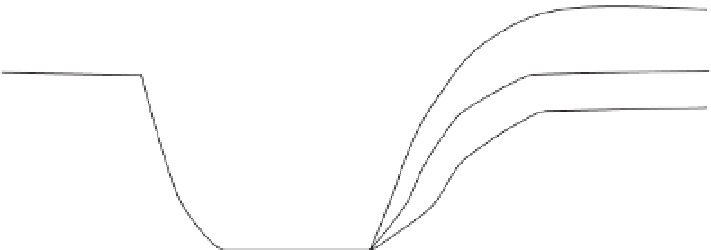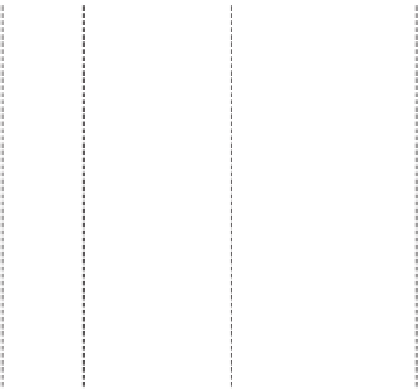Agriculture Reference
In-Depth Information
quite successful in predicting changes in
SOM for local soils, climatic conditions and
agricultural practices. Model predictions are
potentially valuable for improving manage-
ment practices where experimental data are
limited, as is the case of most regions in the
tropics (Syers, 1997).
Using the models, it is now understood
that the amount of carbon in any undis-
turbed agroecosystems is never constant,
but oscillates around a steady state driven
by the accumulation of dry matter and dis-
turbances by fires or other drastic events
such as droughts. Most of the carbon losses
are experienced in the initial
5-10
years,
affecting mainly the labile carbon fractions.
After each disturbance, a period of constant
management is required in order to reach a
new equilibrium that may be lower, similar
or higher than the original one (Johnson, 1995)
(
Fig. 10.2
). Depending on the management,
it will take at least
25-50
years before a new
organic carbon steady state is reached in soils
(Baldock and Skjemstad, 1999; Batjes, 2001).
Soils vary in their ability to resist change
or to recover after disturbance (Greenland
and Szabolcs, 1994; Syers, 1997). Eswaran
(1994) defined soil resilience as the ability of
the soil or system to revert to its original or near
original performance subsequent to stress.
Table 10.3.
Organic carbon (C) pools and estimated ranges in the quantities and turnover times of the
different types of organic matter (OM) present in agricultural soils. (From Jastrow and Miller, 1997.)
Organic C pool
Type of organic matter
Turnover time (year)
Proportion of total OM (%)
Labile
Microbial biomass
0.1-0.4
2-5
Rapid
Litter
1-3
-
Particulate OM
5-20
18-40
Light fraction
1-15
10-30
Moderate to slow
Within macroaggregates
20-35
Passive
Within microaggregates
Physically sequestered
50-
1000
20-40
Chemically sequestered
1000-3000
20-40
L/D:
1
<
1
1
>
1
1
Stable state
C loss
Stable state
C sequestration
Stable state
(a)
(b)
(c)
Time
Fig. 10.2.
Conceptual model of soil organic matter decomposition/accumulation following disturbance.
Scenarios: (a) stabilization at above-original level; (b) stabilization at original level; (c) stabilization at
lower than original level. L/D is the ratio of litter production over decomposition. (From Johnson, 1995.)














Search WWH ::

Custom Search